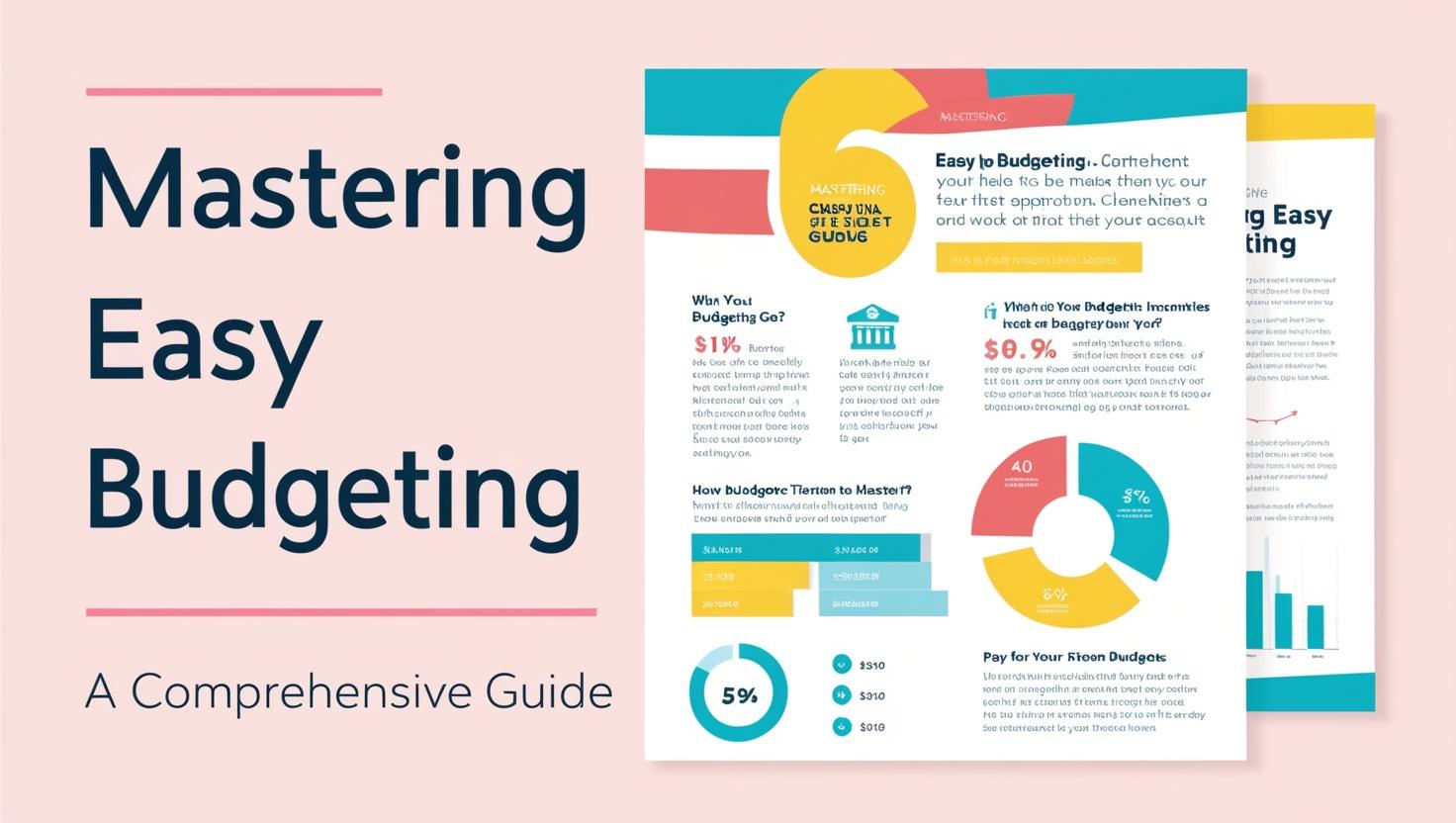Budgeting is a fundamental skill that empowers individuals to manage their finances effectively, reduce stress, and achieve financial goals. This guide delves into practical strategies to simplify budgeting, ensuring it becomes an integral and manageable part of your daily life.
Understanding the Importance of Budgeting
Budgeting serves as a roadmap for your financial journey, helping you allocate resources efficiently and avoid unnecessary debt. It provides clarity on income and expenses, enabling informed decisions about spending and saving.
Step 1: Track Your Expenses
Begin by monitoring your spending habits to identify where your money goes each month. Utilize tools like bank statements, receipts, or budgeting apps to categorize expenses such as housing, groceries, entertainment, and transportation. This awareness is crucial for making informed adjustments.
Step 2: Set Clear Financial Goals
Define both short-term and long-term financial objectives. Short-term goals might include building an emergency fund, while long-term goals could involve saving for a home or retirement. Having specific targets provides motivation and direction for your budgeting efforts.
Step 3: Create a Realistic Budget
Develop a budget that aligns with your lifestyle and goals. Include all sources of income and categorize expenses into fixed (e.g., rent, utilities) and variable (e.g., dining out, entertainment). Ensure your budget is flexible enough to accommodate unexpected expenses without derailing your financial plan.
Step 4: Utilize Budgeting Tools and Apps
Leverage technology to simplify budgeting. Numerous apps can track expenses, categorize spending, and provide visual representations of your financial habits. These tools offer convenience and real-time insights, making it easier to stick to your budget.
Step 5: Implement the ‘Golden Hour’ Strategy
Dedicate one hour each week to managing your finances. During this time, review your budget, track expenses, and plan for upcoming financial obligations. This regular check-in can lead to significant annual savings and keeps you engaged with your financial health.
Step 6: Automate Savings and Bill Payments
Set up automatic transfers to your savings account and automate bill payments. This approach ensures consistent saving and prevents late fees, simplifying financial management and reducing the risk of missed payments.
Step 7: Review and Adjust Regularly
Life circumstances and financial goals can change over time. Regularly reviewing and adjusting your budget ensures it remains relevant and effective. Be prepared to make necessary changes to accommodate new priorities or unexpected expenses.
Step 8: Educate and Involve Family Members
Open discussions about budgeting with family members, including children, can foster a collective effort toward financial stability. Involving family in budgeting decisions promotes transparency and shared responsibility.
Step 9: Practice Mindful Spending
Before making purchases, especially non-essential ones, pause to consider their necessity and impact on your budget. This mindfulness helps prevent impulse buying and keeps your spending aligned with your financial goals.
Step 10: Seek Professional Advice if Needed
If budgeting feels overwhelming, consider consulting a financial advisor. Professionals can provide personalized guidance and strategies tailored to your specific financial situation, ensuring you stay on track.
By implementing these steps, budgeting becomes a manageable and rewarding process, paving the way for financial security and peace of mind.
